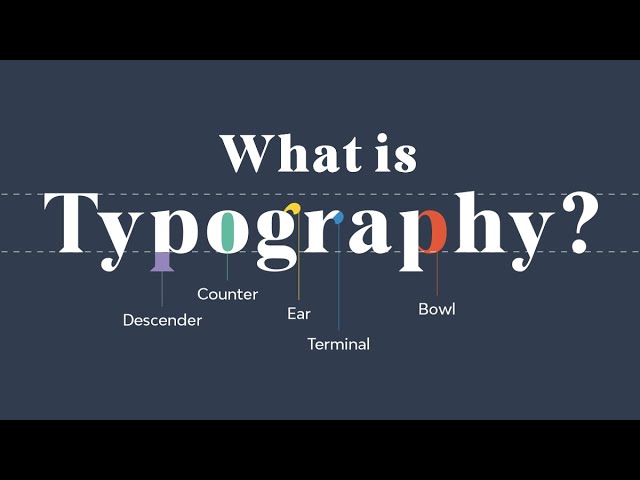Typography, often referred to as the “art of arranging type,” is a multidimensional discipline that goes beyond the arrangement of letters and characters on a page. It encompasses the creative exploration of typefaces, letterforms, spacing, and layout, as well as the scientific application of principles to enhance communication and readability. In essence, typography is the bridge between visual aesthetics and effective communication.
The Elements of Typography
- Typefaces: At the heart of typography are typefaces, also known as fonts. Typefaces come in a variety of styles, each with its unique characteristics and personalities. From elegant serifs to modern sans-serifs, each typeface choice sets the tone and mood of the content.
- Letterforms: Letterforms are the individual characters that make up words. Designers pay meticulous attention to the shapes, proportions, and details of each letterform to ensure visual harmony and readability.
- Line Length and Spacing: The arrangement of text into lines and paragraphs requires careful consideration of line length and spacing. Appropriate line spacing (leading) and the balance between the width of lines (measure) play a crucial role in readability.
- Hierarchy: Typography establishes a visual hierarchy that guides readers through content. Headings, subheadings, and body text are differentiated in size, weight, and style to indicate their relative importance.
The Art of Typography
Typography is an art form that allows designers to convey emotions, tell stories, and capture attention through visual design. The artistic aspect of typography involves:
- Expression of Identity: Typography contributes to brand identity. The choice of typefaces and design elements communicates the character and values of a brand or project.
- Creative Compositions: Designers craft innovative typographic compositions that break free from conventional layouts. These compositions capture attention and express ideas in visually engaging ways.
- Emotional Impact: Different typefaces evoke different emotions. Handwritten scripts may evoke warmth and authenticity, while bold sans-serifs communicate modernity and confidence.
- Visual Aesthetics: Typography is about visual beauty. Designers experiment with color, contrast, and arrangement to create stunning visuals that resonate with the audience.
The Science of Typography
While typography is undoubtedly an art form, it also adheres to scientific principles that ensure effective communication and readability:
- Readability and Legibility: Clear and legible typography ensures that content can be effortlessly read and understood. Proper font sizes, line spacing, and character spacing contribute to readability.
- Visual Hierarchy: An organized hierarchy guides readers through content, ensuring that essential information stands out. This hierarchy relies on font sizes, weights, and styles.
- Consistency: Consistent typography maintains a professional appearance and enhances brand recognition. Using a limited set of typefaces and maintaining consistent formatting contributes to cohesiveness.
- Alignment and Precision: Precise alignment of text elements ensures a clean and organized layout. Alignment enhances visual appeal and readability.
- Accessibility: Typography must be accessible to all readers, regardless of visual ability. This includes selecting accessible typefaces, maintaining proper contrast, and ensuring appropriate font sizes.
In conclusion, typography combines artistic expression with scientific precision to create a visual language that communicates effectively. It merges the beauty of design with the rules of legibility, resulting in compositions that captivate, inform, and inspire audiences across various media. Whether in print or digital form, typography remains a cornerstone of design, enriching content with both aesthetic and communicative value.
